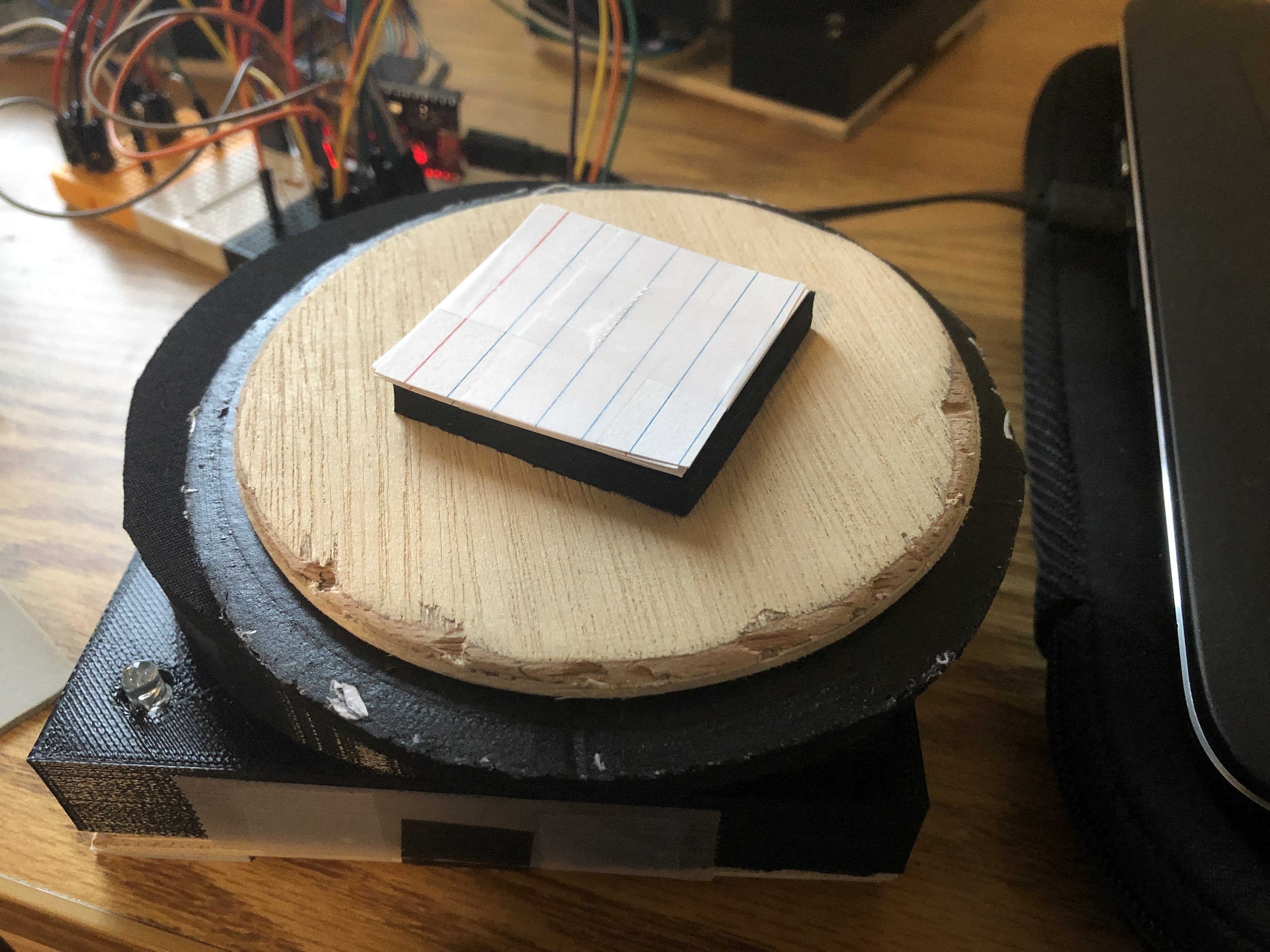The majority of this week was spent on finishing the 4 drum modules and starting my testing in preparation for the final presentation on Monday. The following video shows the current state of the drum setup:
The main takeaways from this demo are that all 4 drums have had their PCBs soldered, and are situated within the drum modules. Furthermore, the wooden bases and rubber pads on top of the modules have been placed as well (although I have opted to only secure the bases in place with tape for now in case I need to disassemble and repair anything inside).
One thing I’d like to highlight is that the rubber pads do not depress heavily when pressure is applied, which is important for maintaining a good “bounce” when the drums are hit by the user.
Additionally, the other primary task for this last week was performing the testing needing for out final presentation this upcoming week. Between the user feedback session we held on Wednesday and specification testing I’ve performed on my own, I have almost all the data I need for the report. To recap, the 4 categories of testing related to the drums are user set-up time, compactness, latency, and recognition accuracy.
The user-setup time and compactness tests had good results, however I did have some issues regarding drum recognition and latency. Regarding recognition, some of the drums were noticeably less responsive than others (which was feedback I received during our user testing session) and to remedy this I placed small paper squares in the main force bearing column of the drum.

These paper squares bring the sensor and rubber pad ever so closer together, which increased the sensitivity greatly.
Regarding the latency, the main issue I encountered was not with the latency itself, but with measuring the output, as the serial monitor I used to check for messages from the drum only outputs results every 60 ms or so, which means I can’t reliable use it to check for latency around the 30 ms mark. I’m going to try a similar test using an oscilloscope tomorrow in the hopes that this will provide better results, however if that doesn’t pan out we may need to use a full latency test from drum to program instead of measuring the drum and program latencies in isolation.
Regarding where I am in the project, I feel confident in my ability to finish the product before the final demo, as most of the remaining tasks I have are mainly aesthetic improvements, such as gluing the drum bases on firmly and printing a module for the ESP32 to be placed in to isolate it from the user. Everything regarding the functionality of these drums is working, although I may be able to make some marginal improvements, and both of those tasks I mentioned earlier will be tackled next week.
